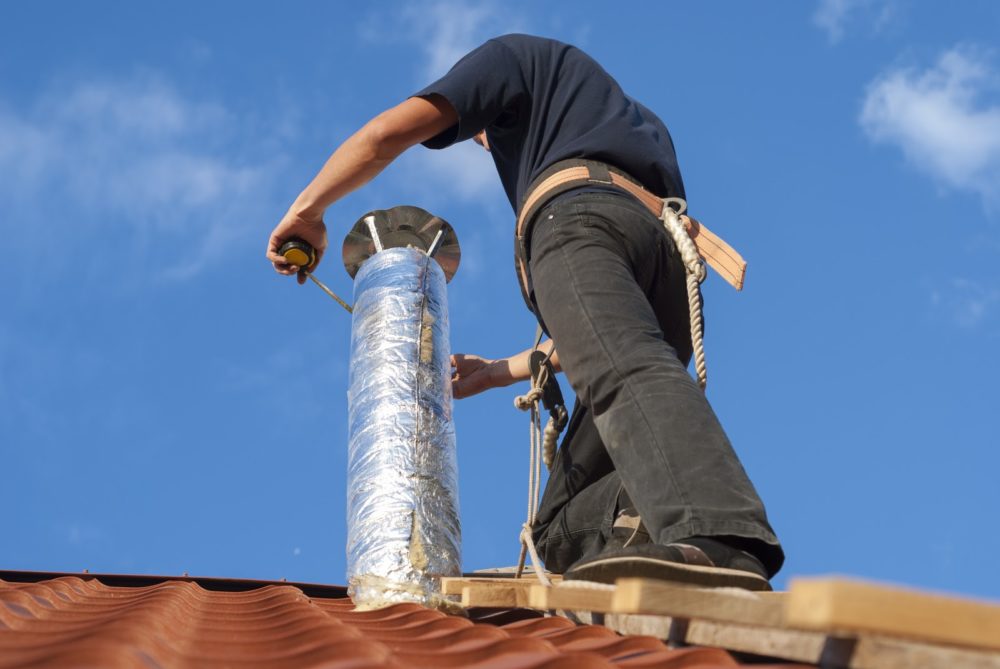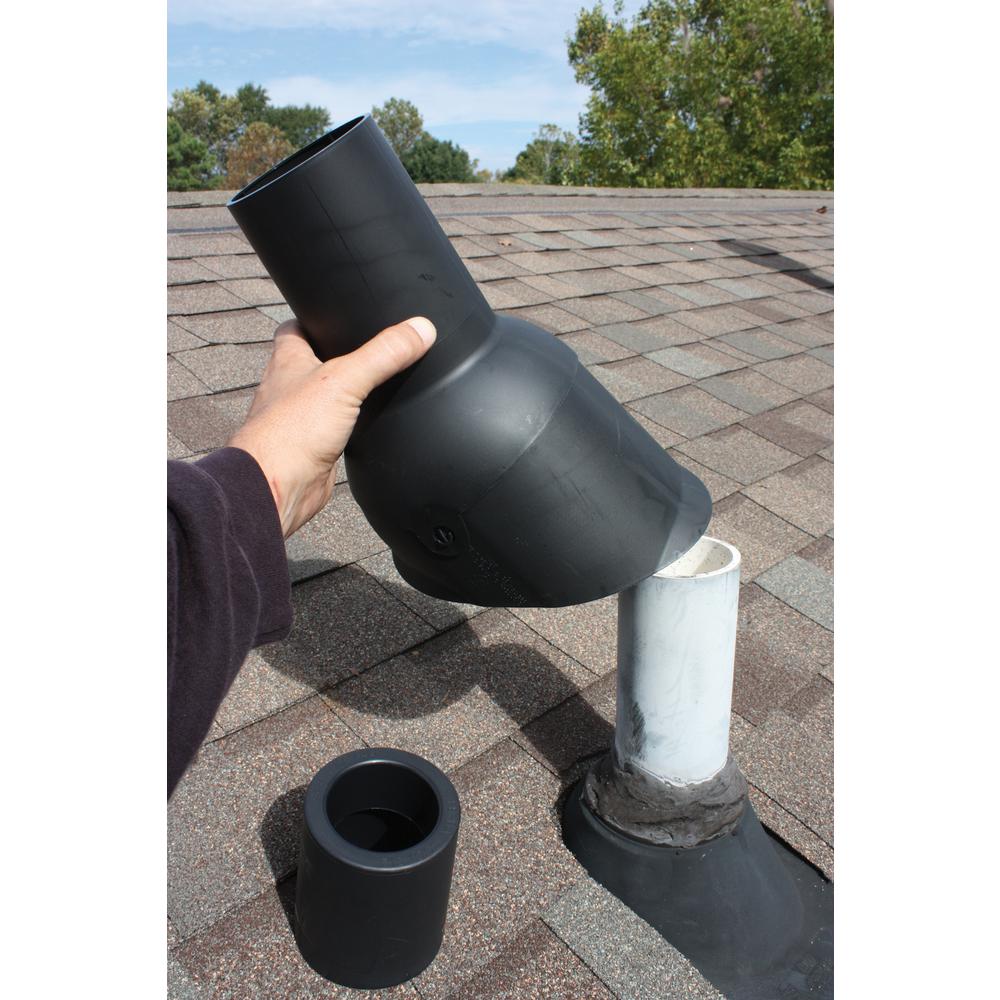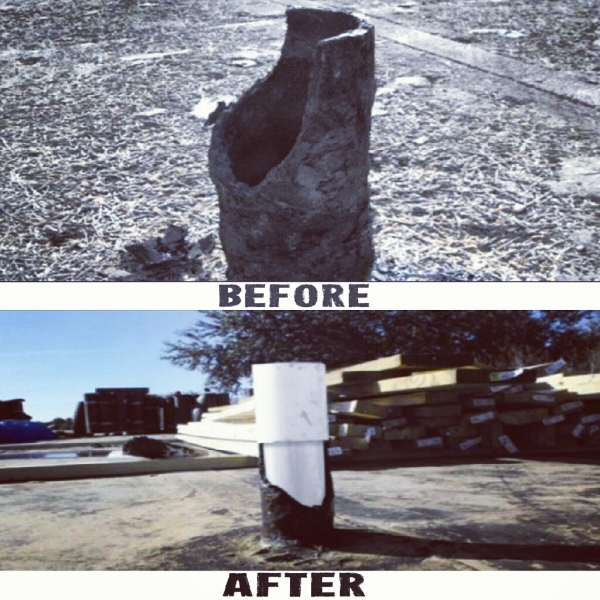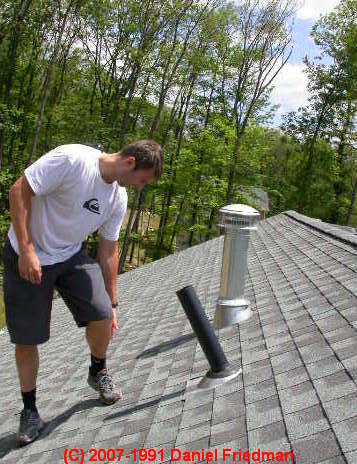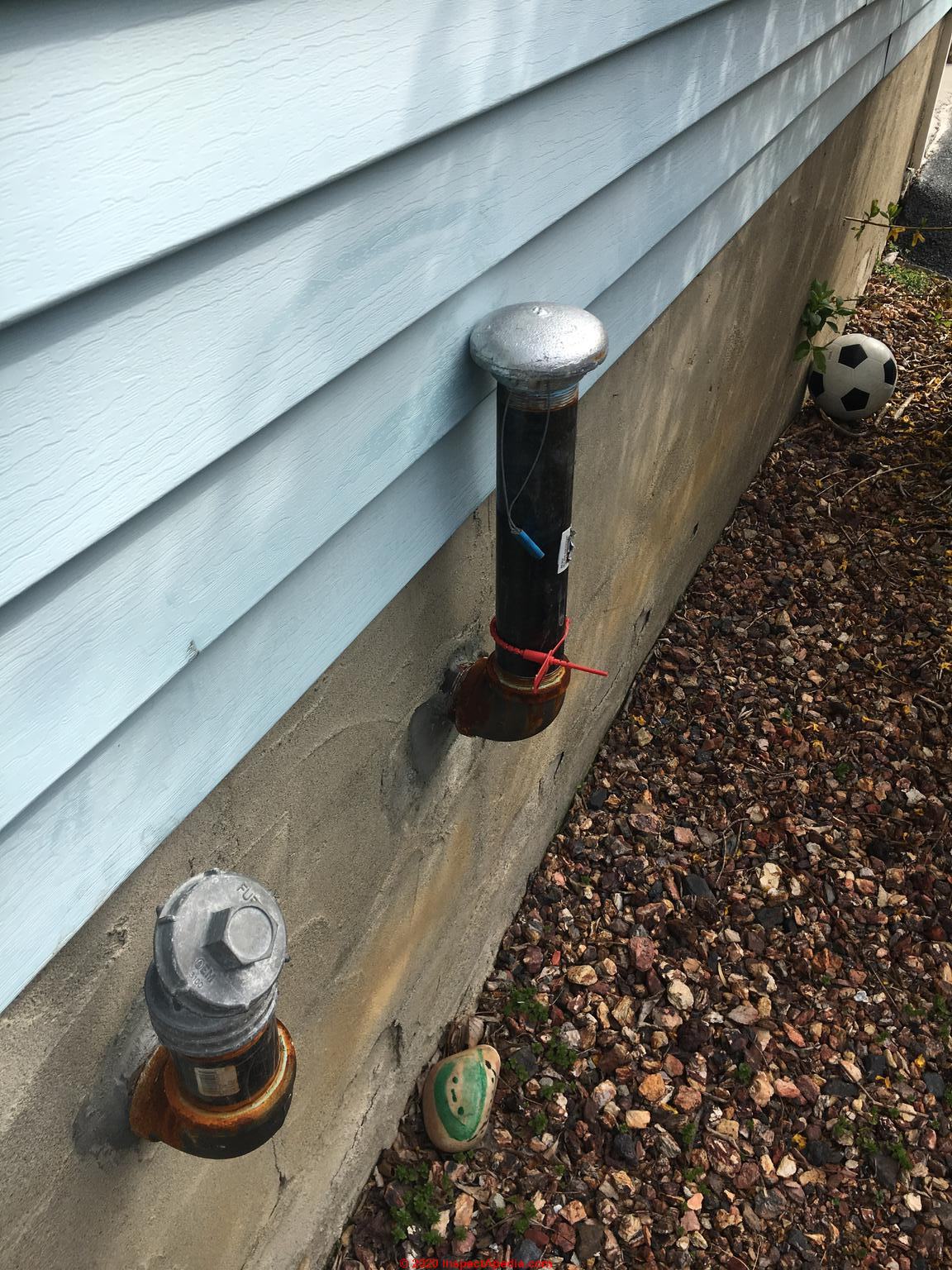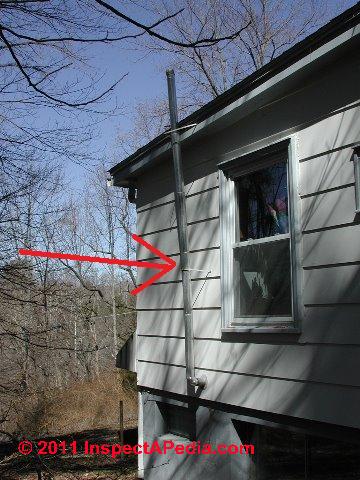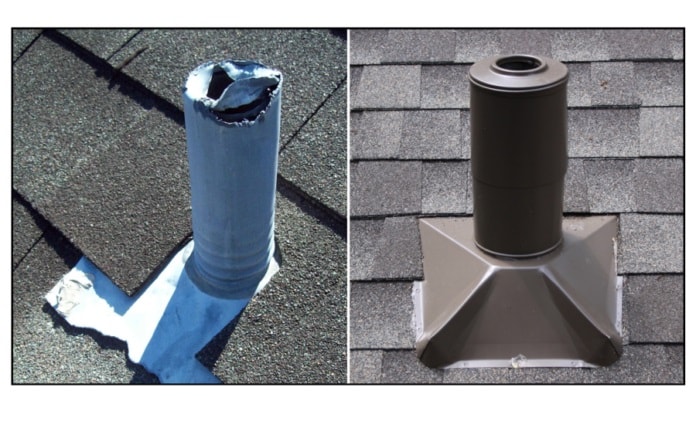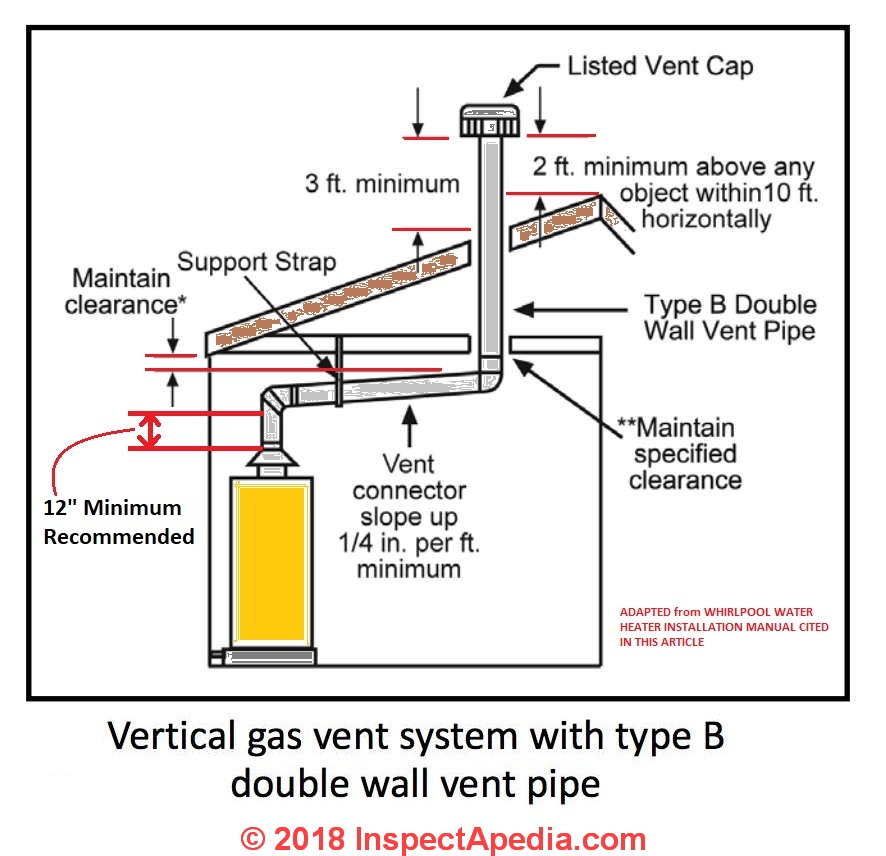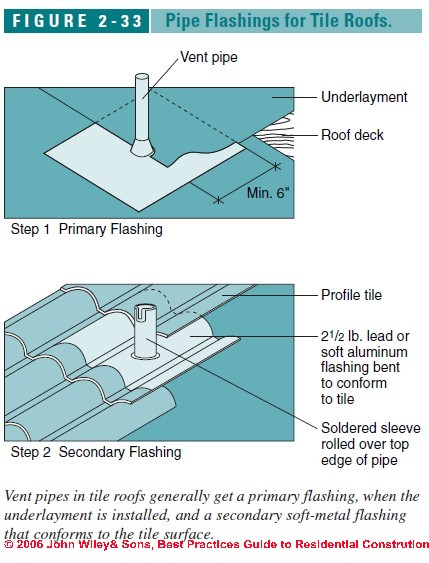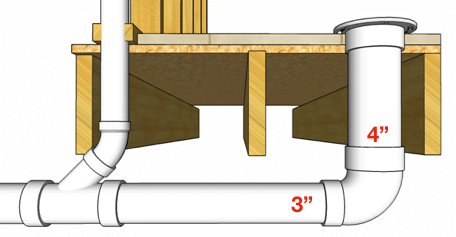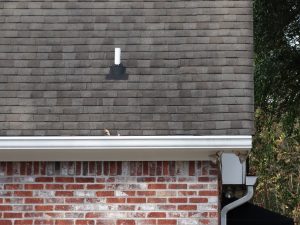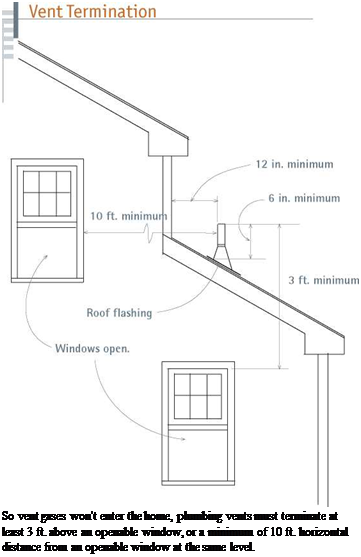How Much Should Septic Vent Pipe Extend Above Roof
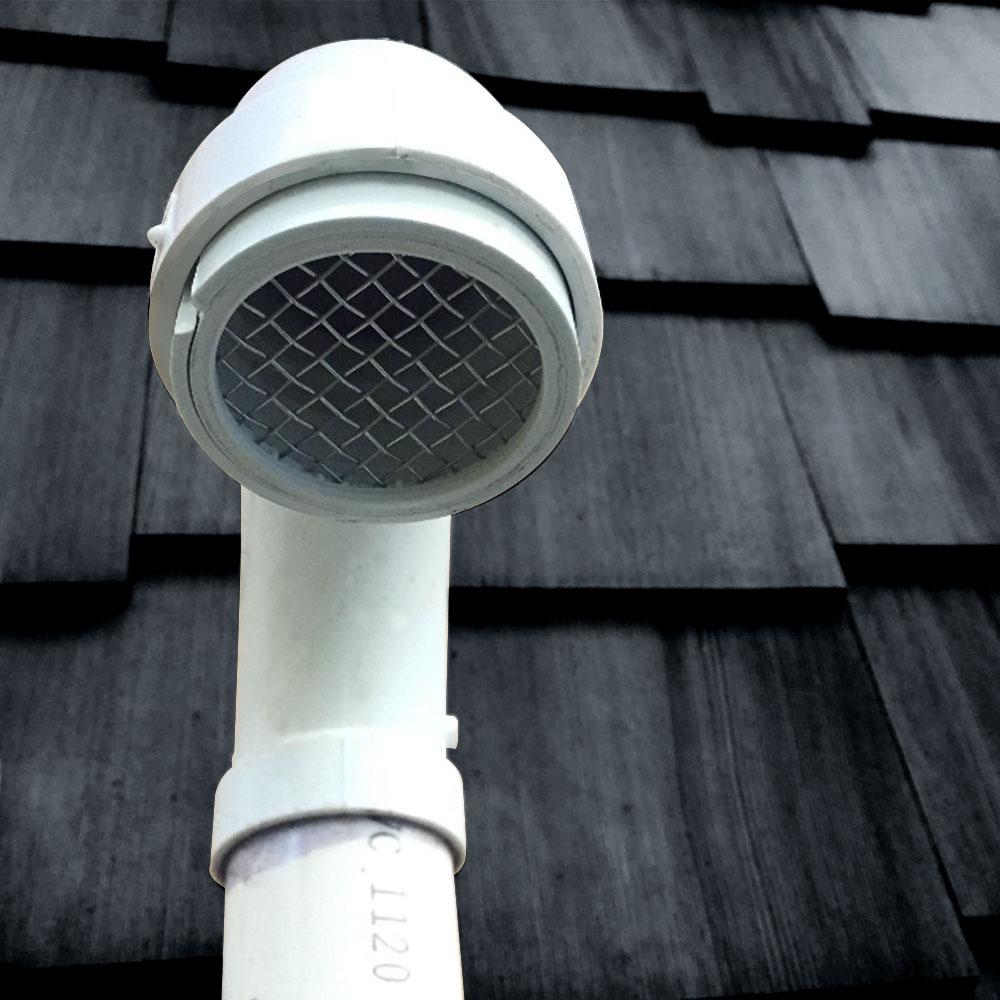
Due to the low pressure in the pipe itself the sewage odors and gases easily find their way out and away from your home.
How much should septic vent pipe extend above roof. The vent pipe of the plumbing system must extend well above the roof line according to most plumbing codes. Extensions of vent pipes through a roof shall be terminated at least 12 inches above such roof unless a roof is to be used for any purpose other than weather protection. This may seem suitable since the only purpose for the stack is to provide air and expel sewer gases. Depending on your region the vent stack may protrude only a few inches above the surface of the roof.
This in turn causes the septic system to back up right to the toilets not a pleasant situation to fix. Measure from the upper end of the connector to the underside of the roof flashing and add 16 inches. The septic venting pipe and system provides a septic tank the ability to move gases and air out of the tank when it fills up with waste and liquid volume. As i recall some plumbing codes state the top of the vent pipe shall be one or two feet higher than a level line 10 feet long from the vent pipe location to the roof.
The sketch shown here may help explain why the vent pipe should extend well above the roof line. Vent pipes should extend to outdoors above the building roof and should terminate vertically not less than 6 above the roof surface nor more than 24 and must be at least 12 from any vertical surface such as a nearby sidewall. Upc i 906 1 and 906 2. That vent pipe actually pulls septic system odors up through to above the roof line of the home.
This accounts for the 4 inch tapered head of the flashing and the minimum 12 inches of vent. This basic release system is essential as a blockage stops the tank from working. This is not the case. Above the roof plumbing vent height.


